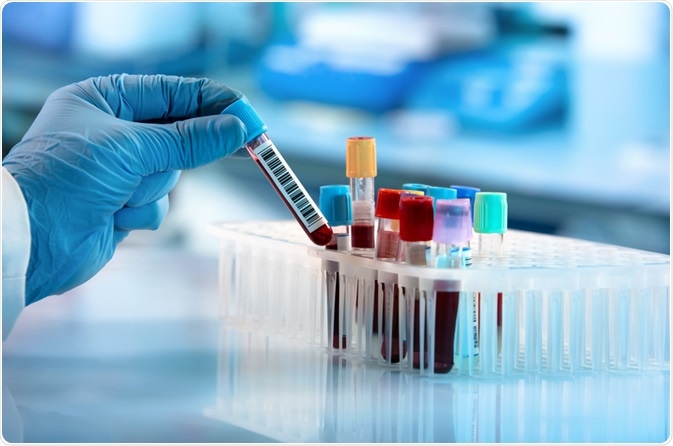Animal testing remains to be a vital part of modern preclinical testing. While the ethics of the use of animals in medical testing remains keenly debated, it is still generally accepted worldwide and continues to be a common methodology used by research teams investigating a range of human diseases.
Before a new pharmaceutical or vaccine can be tested in human participants, it must undergo preclinical testing to determine its safety and efficacy. These tests usually take form as either in vitro experiments, using cultures of human cells, or as animal experiments, where different species of animals are used to provide a model of how the new therapeutic compound may impact a human subject.
A vast range of animals are used in preclinical tests, below we discuss how certain species are favored for the research of particular disorders. Additionally, due to the fact that some species are viewed as having different levels of moral standing than others, the testing of different species is often regulated by different laws specific to the species. We will also discuss how these regulations are changing.
 Image Credit: angellodeco / Shutterstock.com
Image Credit: angellodeco / Shutterstock.com
Types of species used in research for certain diseases
Rodents have been widely used in biomedical research for many decades. Rats have historically been favored by many fields of biomedical research for their genetic similarity to humans and even for their intelligence. Recently, however, there has been a significant shift towards studying mice in place of rats. The motivation behind this shift has been linked to the growing genetic toolbox for mice. This is particularly true for embryonic-stem-cell-based targeting technology for gene disruption.
Neuroscience is one such field that has favored testing on rodents. Over recent decades, this bias to using rodents in preclinical tests has increased in neuroscience, with the use of mouse models rising from around 20% in the 1970s and 1980s to roughly 50% today. Again, the large genetic toolbox for mice is attributed as being the main driving factor in using mouse models in this field. It was back in 1987 that the first study using knockout mice was published, which now represents a turning point in the use of mouse models in biomedical science.
Rats and mice are also commonly used in models for studies into type 2 diabetes. More than any other animals, rodents have been favored by this field of research, with other rodent species also being identified as useful animal models.
Studies into asthma have also favored the use of rats, with mice being the most commonly studied species in the last two decades. Asthma studies have also commonly used cats, dogs, drosophila, horses, and guinea pigs.
Cardiovascular research also relies heavily on rodent models, with mice being a frequently studied species in this field of research. In addition, cardiovascular studies have historically focussed on pigs. However, due to the fundamental differences between the cardiac systems of humans and the animals used in preclinical testing, there has been a growing consensus that the use of animal models in cardiovascular research is limited.
Cancer research is another field that favors the laboratory mouse in its animal studies. While preclinical studies into cancer have utilized canine and primate participants, the mouse model is currently the most common animal model used in cancer research.
Other fields of science show less of a weighting to using rodents in animal models. Preclinical studies aiming to develop vaccines for HIV, for example, have extensively used macaques.
Regulations differ depending on animal species
Different rules and regulations govern the use of animals in research depending on the species and the country in which preclinical testing is being conducted. Some animals are seen as having higher moral status, such as primates, due to their closeness to humans, and, therefore, testing on primates tends to have stricter regulations across the globe.
As a whole, the use of animals in research is facing tighter and tighter restrictions. The Swiss Constitution was amended back in 2004 to acknowledge “the dignity of living beings”. With this, strict limitations were imposed on the use of animals in research, as testing must be limited to preserve the ‘dignity of the creature’. Four years on, in 2008, a Swiss court completely banned the use of macaque brains in scientific studies.
Because primates are closely related to humans, and because they demonstrate advanced social skills and have even been shown to have a sense of self and a ‘theory of mind’ - the ability to attribute mental states to ourselves and others, which does not develop in human children until the age of around 4 or 5 years, primates are more strongly protected from use in research than other non-primate species.
Overall, the use of animals in preclinical testing is becoming more tightly controlled. Now, in order to conduct animal testing, scientists must show that their intended experiment has a true potential benefit and that it cannot be performed using an alternative scientifically satisfactory methodology.
Sources
- Aun, M., Bonamichi-Santos, R., Arantes-Costa, F., Kalil, J. and Giavina-Bianchi, P., 2017. Animal models of asthma: utility and limitations. Journal of Asthma and Allergy, Volume10, pp.293-301. https://www.ncbi.nlm.nih.gov/pmc/articles/PMC5683778/
- Ellenbroek, B. and Youn, J., 2016. Rodent models in neuroscience research: is it a rat race?. Disease Models & Mechanisms, 9(10), pp.1079-1087. https://www.ncbi.nlm.nih.gov/pmc/articles/PMC5087838/
- Evans, D. and Silvestri, G., 2013. Nonhuman primate models in AIDS research. Current Opinion in HIV and AIDS, p.1. https://www.ncbi.nlm.nih.gov/pmc/articles/PMC3987953/
- King, A., 2012. The use of animal models in diabetes research. British Journal of Pharmacology, 166(3), pp.877-894. https://www.ncbi.nlm.nih.gov/pmc/articles/PMC3417415/
- Le Bras, A., 2019. A resource for selecting animal models of heart disease. Lab Animal, 48(11), pp.332-332. https://www.nature.com/articles/s41684-019-0425-4
Further Reading